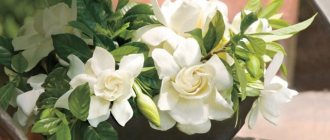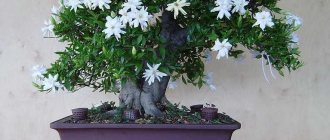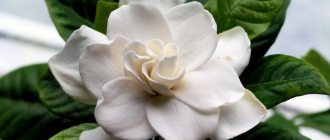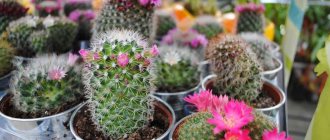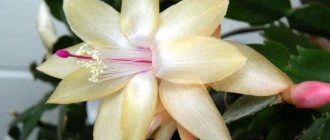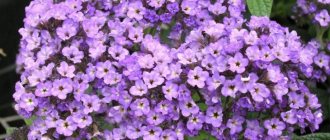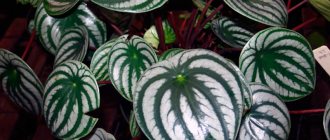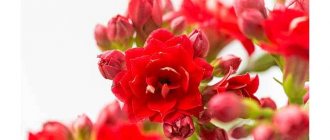The gardenia flower is a plant native to the tropics. Many gardeners agree that it is very capricious and requires careful care.
Considering that there are a sufficient number of varieties, the most optimal for home conditions is jasmine. If favorable conditions are created, this flower will delight you for a long time.
What is necessary?
Gardenia jasmine will fit well into any room with any interior. The apartment will be filled with comfort, and thanks to its unpretentiousness, it will fill the room with grace for a long time. Therefore, you need to take care of favorable conditions for the plant. Here are a few basic rules.
First of all, keep the soil moderately moist. Also, sudden changes in temperature are undesirable, and the most optimal is a twenty-degree temperature regime. The storage location should be filled with light, but direct sunlight falling on the plant is not suitable.
Flower growth is fastest in conditions with high humidity. And finally, try to use warm, purified, settled or rain water.
Some types of gardenia
According to various sources, the genus Gardenia contains from 60 to 250 species of often evergreen plants. Let's list just a few of them:
- Gardenia thunbergia
. A very tall, unpretentious and hardy plant with large snow-white flowers.
Gardenia Thunbergii is most suitable for garden summer maintenance
- Gardenia Taitensis
. The flower petals of this species resemble propeller blades.
Tahitian varieties of gardenia have quite large flowers (in the photo - next to the flower of the more common gardenia jasminoidea (jasminoid)
- Gardenia Tubifera
. Showy yellow flowers against light foliage.
Gardenia Tubifera has several varieties, but its flowers are always yellow, with dense petals in the shape of propeller blades
- Gardenia Kailarsenia
(Vietnamese). It is distinguished by large flowers with six petals.
Vietnamese gardenia flowers are very large in size. Like many other varieties of gardenia, during the fall period its petals curl slightly
- Gardenia Brighamii
(Hawaiian).
This species has almost disappeared in nature. Its white flowers consist of six petals and have a very strong aroma.
Hawaiian gardenia is known for its strong spicy, warm aroma
- Gardenia Radicans
. Representative of a dwarf species. Some varieties of this species have variegated leaves.
Small bushes of gardenia Radicans look very good in landscape compositions directly near the house, and in addition give a strong, pleasant aroma
- Gardenia Citriodora
. A rare variety with a delicate scent of flowers of five petals, similar to a lily.
The rare Gardenia Citriodora has pinkish petals.
- Gardenia Kula
. Because of its large yellow flowers, this species is sometimes called golden gardenia.
Gardenia Kula (golden gardenia) is one of the varieties of gardenia Tubifera
In indoor floriculture, the most popular species is gardenia jasmine , which has the second name “Cape Jasmine”. Many varieties of this species have been bred using the method of selection, which differ in size, shape, color of flowers and foliage, as well as flowering duration. Home Gardenia, as a rule, has a double texture of flowers. The bush itself can reach a height of 45-50 cm.
The homemade jasmine gardenia bush grows quite high, up to 45-50 cm
Light
As we have already mentioned, the lighting must be constant. The south side of the house is not suitable due to the presence of sunlight, so if possible, give the plant a western or eastern window.
In winter, try not to move or turn the flower, otherwise it may crumble and stop growing. Also, avoid drafts.
Healing properties
In folk medicine, the fruits and roots of indoor gardenia are often used - a decoction of them is an antipyretic, anti-inflammatory and hemostatic agent. It is also taken for skin diseases, stomatitis, jaundice and mastitis, to treat ulcers in the mouth and lips, hepatitis, influenza, nosebleeds, nephritis and dysentery. Extracts of their fruits reduce blood pressure.
Gardenia jasmine contains substances that are choleretic. Small fruits help with fever and pulmonary diseases, while large ones are crushed and applied to burns, bruises, tumors and various types of injuries.
Temperature
In the warm season, gardenia at home requires approximately 22 degrees of heat. In winter, the flower will lay buds, and this requires a slightly lower temperature - from 16 degrees. However, do not exceed the specified limit for summer - the life process may slow down.
The air and soil must be at the same temperature - therefore strong changes are unacceptable. Two or three temperature jumps can completely ruin a flower.
Selecting seeds for a greenhouse
It is very important to choose the exact variety of tomato that will be suitable for the greenhouse. There are special “greenhouse” varieties that should be given preference first of all. They grow well in a greenhouse and produce a high-quality and rich harvest. These include:
— Bull's heart. This species is characterized by very high productivity, large and pleasant-tasting fruits.
— Miracle of the Earth is the most ideal variety for greenhouse conditions.
— Samara has sweet and juicy fruits. This variety grows well in a polycarbonate greenhouse.
— Long keeper, with proper care, can produce a harvest of up to 4 kilograms per bush.
— Moneymaker is an early variety that can be planted in a greenhouse in March and harvested in early summer.
— Dina is an excellent variety for greenhouses, which produces a yield of up to 5 kilograms per bush.
There are also more exotic varieties.
Read: Euonymus«>
How to water?
Home care requires strict adherence to water balance. It is noteworthy that depending on the season, the flower requires different amounts of moisture. For example, when it is actively growing and developing, abundant watering is necessary after the soil dries out.
During the demi-season period, the plant should be watered once every 3-4 days after the soil has dried. During the cold season, provide water supply at a minimum level.
Use slightly warm water - it should be settled, purified or rainwater. A small amount of lemon juice in the liquid will not be amiss.
When buds begin to appear, try to provide high humidity. It would not be superfluous to organize such conditions during the rest of the plant’s life.
After the flowers open, you should stop spraying the gardenia. First of all, because they are fragile and can change their color. A small container of water located near the pot will not be superfluous.
When does it bloom?
In order for a plant to bloom in a room, it needs to create suitable conditions. Gardenia blooms in the summer - from May to August. The flowers are mostly solitary, but sometimes collected in inflorescences of 3-5 pieces.
The scent of gardenia is so strong that even one flower is enough to fill an entire room with a heavy, intoxicating aroma . For this reason, it is not recommended to place a container with this shrub in the bedroom or children's room.
Trimmings and pests
If dried leaves appear, it is recommended to remove them immediately. The same goes for weak shoots and flowers. When the plant has grown sufficiently, it will not be a bad idea to thin out the leaves a little.
Basically, all gardenia problems, such as falling flowers, faded leaves, unopened buds, are associated with insufficient lighting or temperature conditions.
If yellow stains appear, we recommend slightly acidifying the soil with lemon juice, and if the plant develops too slowly, there are probably pests.
Thus, we have examined the main aspects related to home care for this flower. All you need is the right approach, following a few basic rules, and you won’t need photos of gardenia - the plant will delight you live, on your window.
Reproduction
There are two ways to get a new plant:
From seeds
This is an easier method of propagation, but to successfully obtain new seedlings you need to take only fresh seeds. The day before sowing the seeds, they are soaked in a growth stimulant , for example, aloe juice.
After this, they are placed in a container with soil, under which there is necessarily expanded clay drainage. Sprinkle the seeds on top with a 0.5 cm layer of soil. Then the ground is generously sprayed and covered with film, making a greenhouse, which is ventilated every day. The seeds germinate in about a month. When the seedlings grow up, they are transplanted into separate pots.
Cuttings
With the vegetative method of propagation, cuttings 8-10 cm long are cut from the mother plant with a sharp knife. In this case, the cut should be neat and even. Before planting in the ground, all lower leaves are removed from the cuttings, and then the shoots are kept for at least 30 minutes in a weak solution of potassium permanganate. This action helps destroy parasites and prevent the occurrence of fungal diseases. It is also recommended to sprinkle the tips of the cuttings with a preparation that stimulates root growth.
Then the prepared cuttings are planted in a container with a soil mixture of peat and river sand. There must be drainage at the bottom of the pot. The soil temperature should not be lower than 24°C .
The planted cuttings need to create a greenhouse, for which they need to be covered with a bag or jar. Once a day, the greenhouse is opened for 2 hours for ventilation, and the cuttings are sprayed with soft warm water.
Rooting takes about a month and is considered successful when young leaves appear on the cuttings. After this, the young plants can be planted in separate pots filled with peat, pine humus and sand.
